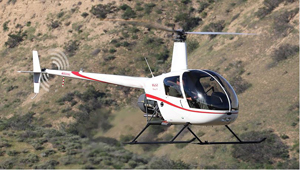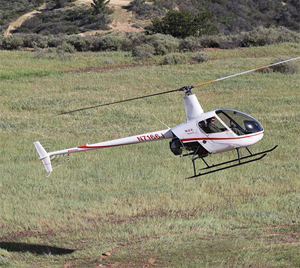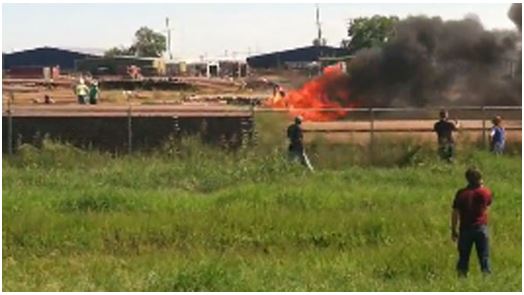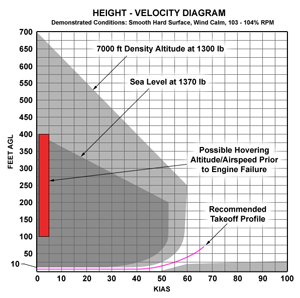Robinson R22B

Photo copyright - used with permission
Helicopter Services, Inc., N281RG
Houston, Texas
September 10, 2012
On September 10, 2012, a Robinson R22B helicopter, N281RG, suffered substantial damage when it impacted terrain during a low altitude maneuvering flight in Houston, Texas. The helicopter had departed Baytown Airport in Baytown, Texas at approximately 1500. A post-crash fire ensued. Both occupants were fatally injured.
The flight was operating under 14 Code of Federal Regulation Part 91 as an aerial photography flight. Day visual meteorological conditions prevailed at the time of the accident. The helicopter was registered to, and operated by, Helicopter Services Inc., in Spring, Texas.
The National Transportation Safety Board (NTSB) determined the probable cause of this accident to be the pilot's failure to maintain control of the helicopter after a loss of engine power. The reason for the loss of engine power could not be determined because examination did not reveal any anomalies that would have precluded operation.
NTSB Accident Number: CEN12FA621

Photo copyright - used with permission
History of Flight
On September 10, 2012, a Robinson R22B helicopter, N281RG, departed David Wayne Hooks Memorial Airport, Houston, Texas, about 1200 local time. The aircraft was flown under 14 Code of Federal Regulations (CFR) Part 91. It was heading to an area near Baytown Airport in Baytown, Texas to conduct low-level aerial photography operations. The helicopter was registered and operated by Helicopter Services Inc. based in Spring, Texas. The weather was Visual Meteorological Conditions (VMC) at the time of the accident. The passenger, seated in the left seat position in the helicopter, was a photographer and was not a pilot. As such, controls associated with the left-seat position were removed in accordance with the manufacturer's recommendations where the seat is occupied by a non-pilot.
Around 1425, the helicopter landed at Baytown Airport and was serviced with 22.9 gallons (137.7 pounds) of 100LL fuel. Investigators gathered multiple witness accounts. Around 1500, the helicopter was observed departing southwest. Approximately 45 minutes later, several witnesses observed the helicopter maneuvering over the steel pipe yard and hovering at a low altitude when the engine stopped providing power.

Photo copyright Robinson Helicopter - used with permission
From these reports, investigators concluded that the helicopter was operating within the "avoid operation area" (shaded area) of the height-velocity curve. Witnesses estimated the helicopter was hovering around 100 to 400 feet (red area). They observed it in a vertical descent, spinning to the left (counterclockwise).
Another witness stated that the helicopter began to turn to the right slowly as it began a slow, vertical descent in a slight nose-down position in a right bank attitude. One witness said the helicopter spun around about four times and it was about 10-15 seconds before it impacted the ground and was engulfed in fire. The pilot and a passenger were both fatally injured. Upon seeing a post-crash fire, two other witnesses used extinguishers until the fire department arrived.
The pilot's autopsy report stated the cause of death was blunt force trauma and thermal injuries.
Pilot's Experience
The pilot was 40 years old and held a commercial pilot certificate for rotorcraft. He had a total of 757 flight hours, including 640 hours as rotorcraft pilot-in-command and 619 hours in the R22B. In the 90 days prior to accident he had logged 141 helicopter hours. The pilot's FAA first class medical was issued on December 16, 2011 with a limitation to fly with corrective lenses.

View Larger
Height-Velocity Curve
Section 5 of the R22 Pilot's Operating Handbook (POH) is the performance section and contains regulatory and performance information to enhance pilot awareness and helicopter safety. Although Section 5 performance is not a limitation, prolonged operation outside or beyond the flight tested and documented region should be avoided.
The height-velocity diagram shows various height and velocity combinations, as identified by the shaded area, that are considered higher relative risk operating. This is because a successful emergency autorotation maneuver is not likely in the event of a loss of power. For this reason, this area of the chart is often referred to as the "dead man's curve."
For additional information on the HV Curve, see the attached article HV Curve.
Post-Crash Fire Resistance
For general aviation aircraft, in generally survivable accidents, post-impact fire is often a contributor in many of the fatalities. The post-impact fire is generally caused by fuel leaks exposed to an ignition source. The FAA has undertaken significant initiatives to reduce the possibility of post-impact fire and in 1991 mandated that all helicopters type certificated after November 2, 1994, have crash-resistant fuel systems per 14 CFR 27.952 "Fuel System Crash Resistance."
The helicopter certification application date, which defines the certification basis (not the manufacturing date), is used to determine the regulatory standards an aircraft must meet. Since the vast majority of helicopters currently being manufactured in the U.S. have certification basis dates prior to 1994, compliance with later regulatory standards is not mandated, as is this case with the accident aircraft which was manufactured in 2007.
All Robinson helicopters (including R22) were initially designed with aluminum fuel tanks. Traditional, general aviation-style aluminum tanks can rupture upon impact, causing fuel to leak and possibly ignite. In order to improve the crash-resistance characteristics, Robinson redesigned these fuel tanks with a bladder-type design. In 2010, Robinson initiated production line installation for the upgraded fuel tanks on new R22 helicopters (serial number 4622 and up).
In January 2014, Robinson Helicopters also issued Service Bulletin 109 for R22 helicopters. It recommended helicopters with aluminum fuel tanks be retrofitted with bladder-type fuel tanks in order to improve crash resistance.

Photo copyright Robinson Helicopter - used with permission
View Larger
Conclusion
The height-velocity diagram clearly denotes the various height and velocity combinations, as identified in the shaded areas, that should be avoided, especially for prolonged operations. Through certification flights it has been determined that a successful emergency autorotation maneuver is not likely in the event of a loss of power. The decision of the accident pilot to continue to operate in this region for an extended period of time put the aircraft and its occupants at risk.
The National Transportation Safety Board (NTSB) determined the probable cause of this accident to be the pilot's failure to maintain control of the helicopter after a loss of engine power. The reason for the loss of engine power could not be determined because examination did not reveal any anomalies that would have precluded operation.
NTSB Accident Number: CEN12FA621
Robinson Helicopter Company Safety Notice SN-34 Aerial Survey and Photo Flight - Very High Risk
Manufacturer's guidance on aerial survey and photo flights should be conducted by well-trained and experienced pilots.
Robinson Helicopter Company Section 5 Performance, Height Velocity Diagram
Specific guidance from helicopter manufacturer on height velocity diagram.
14 CFR 27.952 Fuel System Crash Resistance, October 3, 1994, as amended
Unless other means acceptable are employed to minimize the hazard of fuel fires to occupants following an otherwise survivable impact (crash landing), the fuel systems must incorporate the design features of this section. These systems must be shown to be capable of sustaining the static and dynamic deceleration loads of this section, considered as ultimate loads acting alone, measured at the system component's center of gravity, without structural damage to system components, fuel tanks, or their attachments that would leak fuel to an ignition source.
To perform effective aerial photography, a photographer prefers that the helicopter be flown in a low, slow, and steady manner to assist in capturing quality images. For the pilot to accomplish this, he would have to operate at altitudes and airspeeds that the height-velocity chart advises against. This high-risk action encourages the pilot to potentially hover the aircraft within the height-velocity curve. However, 14 CFR 91.3 states that the pilot-in-command is the final authority as to the operation of that aircraft.
Height-Velocity Envelope
Accident data recognizes that inexperienced pilots are more likely to fly in high-risk operations, such as aerial photography, in order to build flight time. Manufacturers recommend these flights should only be conducted by well trained, experienced pilots who:
- Have at least 500 hours pilot-in-command in helicopters and over 100 hours in the model flown.
- Have extensive training in both low RPM and settling-with-power recovery techniques.
- Are willing to say no to the observer or photographer and only fly the aircraft at speeds, altitudes, and wind angles that are safe and allow good escape routes.
Crash-resistant Fuel System
The lack of fuel system crash resistance increases the risk of post-crash fire. In this accident, most likely non-survivable, the helicopter did not have a crash-resistant fuel system, nor was one required.
Pilots fly the aircraft at speeds, altitudes, and wind angles that are safe and allow good escape routes and are willing to say no to the observer or photographer who request the pilot to conduct maneuvers outside of safe operations.
- The pilot did not adhere to the height-velocity chart when he operated the aircraft in the "dead man's curve." He yielded to pressure from the client to put the helicopter in a high-risk regime. The engine failure resulted in an emergency and subsequently an autorotation, which was unsuccessful.
Crash-Resistant Fuel System
Safety Notice SN-34 Photo Flights - Very High Risk, April 2009
Robinson Helicopter, at the time of this incident, was already in the process of redesigning and upgrading the fuel tanks for all Robinson helicopter models. All Robinson helicopters (including R22) were initially designed with aluminum fuel tanks. In order to improve the crash resistance characteristics, Robinson redesigned these fuel tanks with a bladder type design. In 2010, Robinson initiated production line installation for the upgraded fuel tanks on newly manufactured R22 helicopters (serial Number 4622 and up).
In January 2014, Robinson Helicopters issued a Service Bulletin 109 for R22 helicopters, which provided for aluminum fuel tanks to be retrofitted with bladder-type tanks to improve crash resistance of the fuel system. The intent of the updated design was to sustain higher impact loads, which would prevent the tank from rupturing during an impact thus preventing or delaying post-impact fire thus reducing injuries.
H.R.302 - FAA Reauthorization Act of 2018, Section 317 § 44737, Helicopter fuel system safety
Rotorcraft Occupant Protection Working Group, Final Report 2018-03-15, Crash Resistant Fuel System (CRFS)
This report contains the Rotorcraft Occupant Protection Working Group (ROPWG) recommendations for incorporating crash resistant fuel systems (CRFS) regulations into newly manufactured rotorcraft that were certified before these regulations went into effect (legacy helicopters). These recommendations supersede the interim ROPWG proposals submitted on May 11, 2017.
FAA Special Airworthiness Information Bulleting (SAIB) SW-17-31 13 October 2017, Fuel System
This Special Airworthiness Information Bulletin (SAIB) notifies all registered helicopter owners and operators of an available list of helicopters that are fully compliant with the crash resistant fuel system (CRFS) safety standards of Title 14 of the Code of Federal Regulations (14 CFR) § 27.952 or 14 CFR § 29.952. Operating a non-CRFS compliant helicopter is not an airworthiness concern that would warrant airworthiness directive (AD) action under 14 CFR part 39. However, operating a CRFS compliant helicopter may reduce the risk of post-crash fires and improve occupant survivability in an accident.
U.S. Helicopter Safety Team (USHST) Helicopter - Safety Enhancements (H-SE)
- Helicopter Safety Enhancement (H-SE) Number 124:
- Helicopter Safety Enhancement (H-SE) 123:
- Helicopter Safety Enhancement (H-SE) 81:
Rotorcraft Life Cycle:
- Operational
Accident Threats:
- System/Component Failure or Malfunction (powerplant) (SCF-PP)
- Loss of Control - Inflight (LOC-I)
- Low Altitude Operations (LALT)
- Fire / Smoke (POST-IMPACT) (F-POST)
Industries:
- Aerial Observation
Accident Common Themes:
- Human Error
Human Error
The NTSB determined the probable cause of the accident to be the pilot's failure to maintain control of the aircraft after the engine failure. The Robinson R22 Flight Manual, height-velocity diagram identifies areas of the flight envelope that represent high-risk regime where successful autorotation may be unlikely. When operating in these high-risk areas, it is the pilot's responsibility to prepare for any emergency and immediately input appropriate flight control responses. The pilot, at the time of the engine failure, was operating in the area of the curve where prolonged operations should have been avoided. Being close to the maximum weight and hovering low with no forward airspeed, prevented the pilot from executing a successful autorotation, which fatally injured both occupants and destroyed the aircraft.
NTSB Identification: ERA11FA272
Aircraft: Robinson R44 II, Registration: N445AB
Accident Occurred: April 30, 2011, in Indiana, PA
Injuries: 1 Fatal, 3 Serious
Analysis
The single-engine helicopter was operating in an urban area with a three-person film crew onboard who were following the movements of police vehicles. One of the passengers reported that, while following cars and filming them, the pilot turned the helicopter about 180 degrees while not moving in a forward direction. The helicopter then started bucking forward and backward and, at the same time, began to spin downward until it impacted a building. A witness reported that he saw the helicopter flying about 100 feet above ground level at a very slow rate of forward airspeed in a west-to-east pattern while making multiple passes. He said that the helicopter was making 180-degree flat turns (without a banking attitude). A few minutes later, he saw the helicopter flying in a northwesterly direction, enter what he believed to be a short sudden autorotation, and then lose altitude. Post-accident examination of the helicopter did not reveal any preexisting mechanical anomalies with the airframe, drive system, or engine that could have contributed to the accident.
Probable Cause and Findings
The National Transportation Safety Board determined the probable cause of this accident to be: The pilot's operation of the helicopter at a low-forward airspeed out of ground effect, which resulted in the helicopter’s loss of translational lift and tail rotor authority and the pilot’s subsequent loss of helicopter control.
Technical Related Lessons
In order to maintain safe flight, pilots need to refrain from prolonged operation within the Avoid Operations Area, also known as "dead man's curve," of the height-velocity diagram. (Threat Category: Loss of Control - Inflight)
- Through witness reports, investigators determined the pilot, while conducting aerial photography operations, flew the helicopter continuously in the "dead man's curve" (shaded areas) of the height-velocity chart. Specifically, the pilot entered into a low-altitude, low-airspeed condition from which he could not recover once the engine lost power. This combination of altitude and airspeed did not allow sufficient time to execute a successful autorotation, and the aircraft descended rapidly until impact.
The risk of post-crash fires from fuel leaks in survivable crashes can be reduced through installation and utilization of crash-resistant fuel systems (CRFS). CRFS design requirements increase safety in the event of a survivable crash by either decreasing the likelihood or delaying the onset of post-crash fires. (Threat Category: Fire/Smoke)
- Special Airworthiness Information Bulletin (SAIB) SW-17-31R1, Fuel System, notifies all registered owners and operators of helicopters, which are either fully compliant with the CRFS safety standards or compliant with the 2018 statutory requirement, to incorporate a CRFS design. The 2018 statute 49USC44737, effective April 5, 2020, applies to newly manufactured rotorcraft. In addition, the SAIB recommends that owners and operators pursue installation of fuel systems that improve the fuel system crash-resistance capability of their helicopters. The accident aircraft did not incorporate CRFS technology, nor was it required.
Common Theme Related Lessons
Prolonged operations within the shaded area of the height-velocity flight envelope should be avoided. Flight in the shaded area, also known as "dead man's curve," can preclude the ability to execute a safe autorotation and landing in the event of engine or driveline failure. (Common Theme: Human Error)
- In this accident, the pilot extended operations within the "dead man's curve" and suffered a power loss, leading to an unsuccessful autorotation and crash. A pilot's training, skills, and experience, along with observance of proper procedures, is crucial to safe flying.
